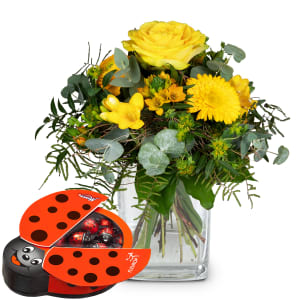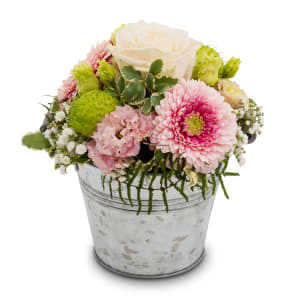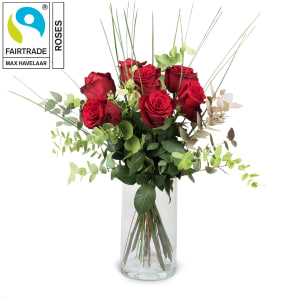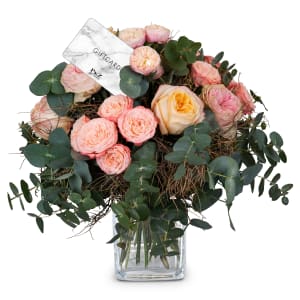Flirt with spring flowers
Learn more about popular spring flowers: elegant freesias, charming
ranunculi, exotic fragrant hyacinths and delicate muscari.

Ohlala - freesias that go to the heart
Freesias are real eye-catchers. Sometimes they are white or yellow, but then also pink, purple, or red-orange. They even come in two or more colors, with single or double flowers. In addition, most of them are fragrant. Nevertheless, freesias are not intrusive. They exude natural elegance and dynamism. Native to South Africa, freesia came to Europe at the end of the 17th century. At that time, it was mistakenly classified as a different species and almost perished in history. But in the mid-18th century, it was discovered in a botanical garden in Italy. The German pharmacist Christian F. Ecklon was the first to describe the plant, and in 1866 he baptized it with the botanical name Freesia after his friend Friedrich Freese. Soon this inspired the whole of Europe
and became one of the most popular cut and garden flowers.

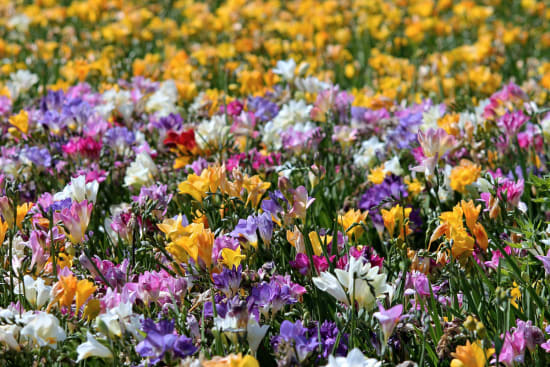

Peppery fresh or rather sweet? The scent of freesia
Already sniffed freesias? Then you know that the peppery scent of freesias is incomparable because it evokes longings. Not all freesias smell the same. White flowers have a spicy scent, while variegated flowers give off more of a freshly cut grass scent. The scent is least pronounced on purple freesias. It's best to sniff through them in a flower store to find your scent favorites. By the way, the scent of freesia has long been one of the most popular in the manufacture of soaps and body lotions. It first became known in perfumes when a florist from New York presented a fragrance with freesia as the dominant note in 1984. She was in love with the fragrance of freesia. The success proved her right. Because
freesia-scented perfumes are now among the cult fragrances.


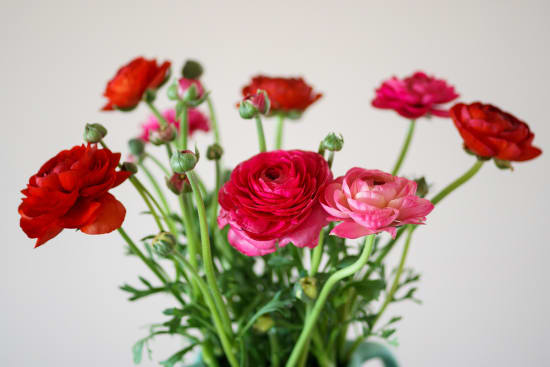
Ranunculi are absolute vase stars
In spring, ranunculi are among the most beloved spring flowers. With their elegant, lush blossoms, they are reminiscent of small peonies and exude a charm that hardly anyone can resist. Longing for rich colors? Then you've come to the right place. Because with their enchanting flower dress and the puffy petticoats in white, yellow, orange, pink, red to almost black, you bring spring into the living room right from the beginning of the year. The trendy flowers conjure up spring freshness in the house and drive away the winter. In the language of flowers, ranunculus stands for charm. That's a good starting point to express
our appreciation to someone with a colorful bouquet of ranunculi.

Ranunculi grow where the frogs croak
In the 18th and 19th centuries, ranunculi are said to have had almost the same status as tulips. Then they fell somewhat into oblivion, to be today for a successful spring decoration almost indispensable. Botanically, ranunculi are called «ranunculus», which translates as froglet. The reason for this is the fact that the ranunculus prefers moist soils and was mostly found on riverbanks and in swampy areas - like frogs. But those who know the beauty of the spherical flowers, do not be deterred. After all, like the frog from the fairy tale «The Frog Prince», who was transformed into a prince, behind the facade of the ranunculus
is a charming, easy to care for and desirable spring flower.

Hyacinths are cheerful exotics
Now they are back, the cheerful hyacinths with their blue, pink, red, yellow, white, or even pastel flowers. They originated in the Middle East and made their debut in Turkey. There they became so popular that in 1593 50,000 white and 50,000 blue hyacinths were used for a single garden in Edirne. They reached Europe via Constantinople and experienced a real boom because of their exotic strangeness. The Dutch in particular fell in love with them and kept breeding new colors. In the meantime, hyacinths can be seen more and more often in vases. But unlike most other flowers, they should not be cut. The stem could otherwise become slimy and inhibit water absorption.
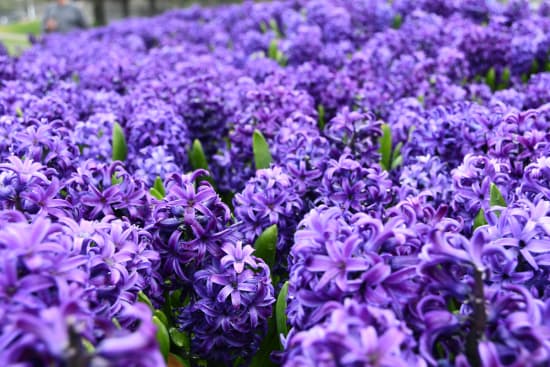


Hyacinths are pure spring fragrance
Hyacinths not only look beautiful, but also exude a bewitching fragrance. This varies from variety to variety. The blue-flowered hyacinths 'Blue Star' and 'Delft Blue', for example, are very fragrant. Somewhat more discreetly scented are the pink varieties such as 'Anna Marie' and 'Splendid Cornelia'. Hyacinths with the weakest fragrance are 'White Pearl', 'Blue Pearl' and 'Pink Pearl'. The perfume industry also makes use of hyacinths. However, their fragrance is difficult to obtain. Moreover, one kilogram of the highly concentrated fragrance «Hyazinthe Absolue» requires about one ton of blossoms. The floral note of the hyacinth is described as «green, floral» or also «like a deep breath in the spring air». Well, in the mood for some spring fragrance?
Then it's best to try natural hyacinths.
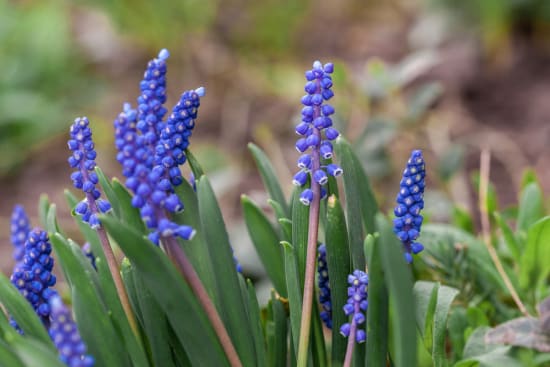
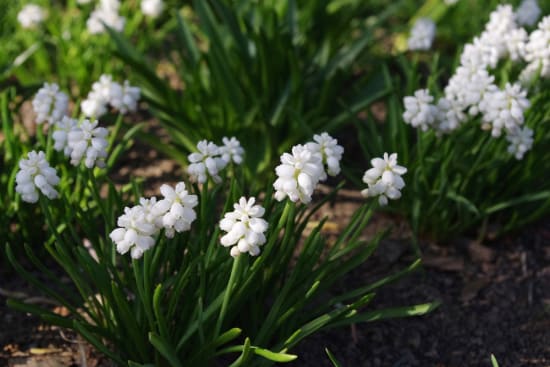
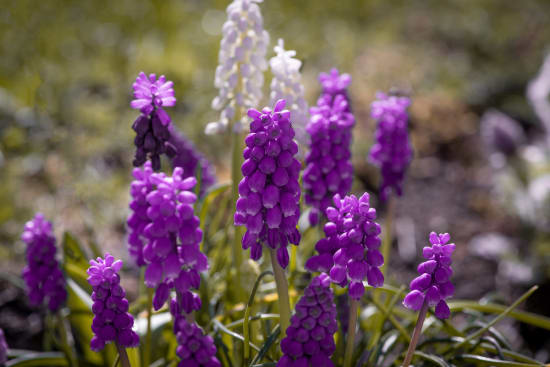
Pollen shower for mason bees
Delicately fragrant muscari (grape hyacinths) are almost as popular as the «normal» hyacinths. They originate from Europe, North Africa as well as Southwest Asia and are offered in spring as small pot plants, but also as cut flowers for bouquets and arrangements. The special feature: their color varies from light blue to deep purple, but you can also find white, pink and even yellow. In addition, they are valuable nectar dispensers. Therefore, they are perfect for serving mason bees the first energy cocktail in the morning. In the process, the pollen is collected in a special way: since it is hidden in the flower, the mason bee lets the pollen trickle onto its head when it visits the flower. You see: grape hyacinths are really versatile. They decorate the house and garden, give off a subtle fragrance and make a small
contribution to an environment with more wild pollinators.
More info about spring
High-spirited, flowery, and exuberant spring customs
In the Engadin it's bells, in northwestern Switzerland it's eggs, in Geneva it's flowers, and in Finland it's simply a huge party. Welcome to spring!
Give a little spring!
Show yourself or others that spring is here and create spring feelings, good mood and optimism with spring flowers, colors, and scents.
Flirt with spring flowers
Learn more about popular spring flowers: elegant freesias, charming ranunculi, exotic fragrant hyacinths and delicate muscari.
Happy Easter!
We'll tell you surprising things about eggs (and Easter eggs) and introduce you to some amazing Easter events taking place in Switzerland.
20 March is the «Day of Happiness»!
Are you happy? Do you make others happy? 20 March is International Day of Happiness and therefore a good moment to focus on happiness.
For spring mood or parties at home - FleuropHOME
Whether flowers, plants, garden tools, decorations, drinks, treats and more: FleuropHOME is sure to have it all and will send it to you in a flash by mail.

